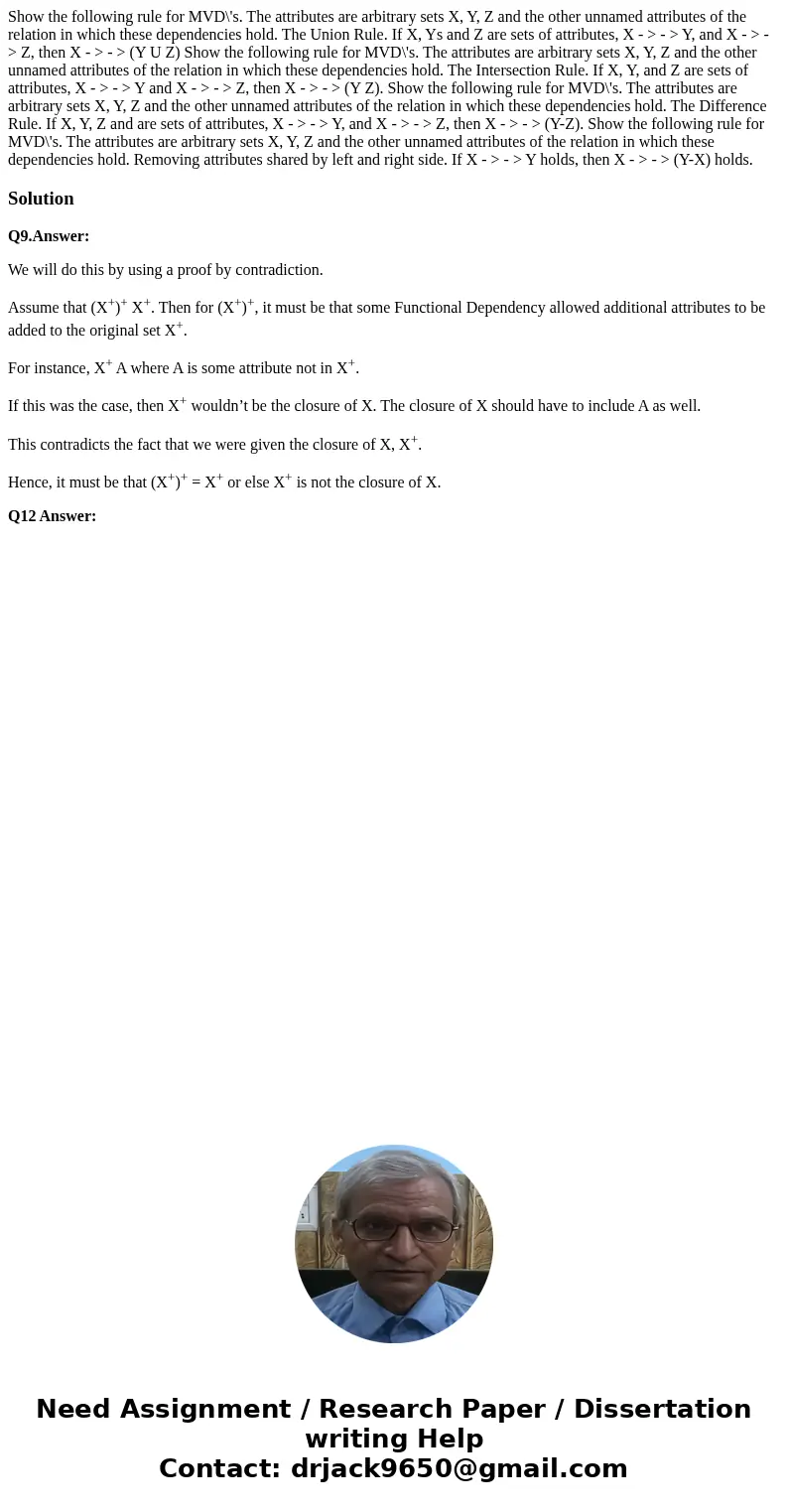Show the following rule for MVDs The attributes are arbitrar
Show the following rule for MVD\'s. The attributes are arbitrary sets X, Y, Z and the other unnamed attributes of the relation in which these dependencies hold. The Union Rule. If X, Ys and Z are sets of attributes, X - > - > Y, and X - > - > Z, then X - > - > (Y U Z) Show the following rule for MVD\'s. The attributes are arbitrary sets X, Y, Z and the other unnamed attributes of the relation in which these dependencies hold. The Intersection Rule. If X, Y, and Z are sets of attributes, X - > - > Y and X - > - > Z, then X - > - > (Y Z). Show the following rule for MVD\'s. The attributes are arbitrary sets X, Y, Z and the other unnamed attributes of the relation in which these dependencies hold. The Difference Rule. If X, Y, Z and are sets of attributes, X - > - > Y, and X - > - > Z, then X - > - > (Y-Z). Show the following rule for MVD\'s. The attributes are arbitrary sets X, Y, Z and the other unnamed attributes of the relation in which these dependencies hold. Removing attributes shared by left and right side. If X - > - > Y holds, then X - > - > (Y-X) holds.
Solution
Q9.Answer:
We will do this by using a proof by contradiction.
Assume that (X+)+ X+. Then for (X+)+, it must be that some Functional Dependency allowed additional attributes to be added to the original set X+.
For instance, X+ A where A is some attribute not in X+.
If this was the case, then X+ wouldn’t be the closure of X. The closure of X should have to include A as well.
This contradicts the fact that we were given the closure of X, X+.
Hence, it must be that (X+)+ = X+ or else X+ is not the closure of X.
Q12 Answer:

 Homework Sourse
Homework Sourse